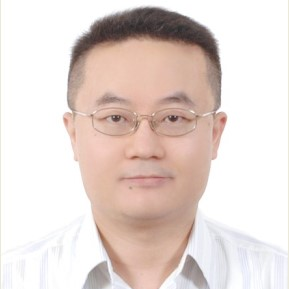Power Electronics and Power Conversion-Related Applications of Micro Energy Devices
A special issue of Micromachines (ISSN 2072-666X). This special issue belongs to the section "D:Materials and Processing".
Deadline for manuscript submissions: closed (28 February 2022) | Viewed by 5090
Special Issue Editors
Interests: power electronics; power conversion; electronic lighting; energy-saving
Special Issues, Collections and Topics in MDPI journals
Interests: power electronics; switching power converter; LED driver
Interests: sliding mode control; intelligent control; grey theory; power electronic converters
Special Issues, Collections and Topics in MDPI journals
Interests: inverters; photovoltaic power systems; LED drivers
Special Issues, Collections and Topics in MDPI journals
Interests: networked control system; fault tolerant control; descriptor systems; optimization problems
Special Issues, Collections and Topics in MDPI journals
Special Issue Information
Dear Colleagues,
The power conversion of micro energy devices converts available energy into more useful forms, such as converting mechanical, chemical, thermal, kinetic energy, solar energy, or wind power into electricity, propulsion, or cooling. Typical micro energy conversion devices include micro heat engines, micro turbines, micro fuel cells, vibration energy harvesters, micro rocket engines, micro coolers, and so on. In addition, microelectromechanical systems are ultra-compact systems composed of micromechanical components such as sensors, actuators and electronic circuits on a silicon wafer using the microfabrication and manufacturing technology. The microelectromechanical systems contribute to the ultra-miniaturization of various products, such as the digital microdisplays of projectors, nozzles inside the heads of ink-jet printers, piezoelectric ceramic actuators, and various sensors such as gyroscopes, pressure sensors, acceleration sensors, and flow rate sensors. In addition, energy harvesting is a process from which energy can be obtained, captured, and stored from external sources and devices for use in small wireless autonomous devices, wearable electronic devices, and wireless sensor networks. Power electronics is the application of solid-state electronics and the latest semiconductor technology for harvesting, converting, and controlling energy and power. Accordingly, this Special Issue aims to invite original research papers and review articles that focus on the recent developments and technology for power electronics and power conversion-related applications involving micro energy devices and microelectromechanical systems.
Prof. Dr. Chun-An Cheng
Prof. Dr. Hung-Liang Cheng
Prof. Dr. En-Chih Chang
Prof. Dr. Chien-Hsuan Chang
Dr. Ching-Min Lee
Guest Editors
Manuscript Submission Information
Manuscripts should be submitted online at www.mdpi.com by registering and logging in to this website. Once you are registered, click here to go to the submission form. Manuscripts can be submitted until the deadline. All submissions that pass pre-check are peer-reviewed. Accepted papers will be published continuously in the journal (as soon as accepted) and will be listed together on the special issue website. Research articles, review articles as well as short communications are invited. For planned papers, a title and short abstract (about 100 words) can be sent to the Editorial Office for announcement on this website.
Submitted manuscripts should not have been published previously, nor be under consideration for publication elsewhere (except conference proceedings papers). All manuscripts are thoroughly refereed through a single-blind peer-review process. A guide for authors and other relevant information for submission of manuscripts is available on the Instructions for Authors page. Micromachines is an international peer-reviewed open access monthly journal published by MDPI.
Please visit the Instructions for Authors page before submitting a manuscript. The Article Processing Charge (APC) for publication in this open access journal is 2600 CHF (Swiss Francs). Submitted papers should be well formatted and use good English. Authors may use MDPI's English editing service prior to publication or during author revisions.
Keywords
- micro energy devices
- microelectromechanical systems
- micro power generation
- micro heat engines
- micro fuel cells
- micro energy harvesting
- micro propulsion
- micro coolers










